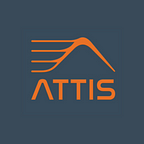Metric Monday: Why Your Asymmetry May Be Holding You Back
It’s Metric Monday time again!
In this series, we take an in-depth look at a range of metrics which impact your running and one by one, detail their importance, what they mean, and how understanding and working to improve on each metric can help you in your running performance.
By understanding and working on these metrics for those crucial, performance-boosting marginal gains, you can improve on the key aspects of your form and technique and become a consistently better runner.
This week, we’re looking at why common traits in your asymmetry may be holding back from reaching your best, optimal running performance.
If four-time Olympic gold medal winner Michael Johnson says that working on your symmetry is important, then it’s fair to assume that it probably is.
Often a disregarded metric, aiming to work on your asymmetrical gait is the key to unlocking much of your running potential and keeping your body at less risk from injury.
As a metric, symmetry is both a crucial and undervalued feather to a runner’s bow, but often one that isn’t fully grasped or understood.
So, with that in mind, here’s everything you need to know about symmetry, from what it is to how it can help you become a better runner.
What is symmetry?
Put simply, it’s the symmetry (or balance) between your left and right side of your body when running.
As a metric, this is measured in percentages, with 100% being completely symmetrical. Don’t expect to achieve that score, however, as it’s an almost inhuman feat that is not expected of even the best runners!
Why does it matter?
Symmetry is hugely important for both your efficiency and to protect you from any potential injuries prevention.
Firstly, your asymmetrical gait is often what presents weaknesses to many runners.
By having an imbalance of weight to either side of your body as you run, your asymmetry will be knocked off centre, denting your form and efficiency and preventing you from reaching a consistent form and your maximum potential.
Think of it like this; when you run, your body is doing a lot of things in a lot of different places — muscles like your glutes, hamstrings, calves, and joints like your knees and hips are all in action and working to maintain your forward propelling motion.
If you are using too much of one of those by placing too big an emphasis on it, you’ll find that after a while, that those energy resources will be depleted, lessening your overall performance.
Fixing your asymmetries and creating a more balanced performance is the key to unlocking this untapped potential. You want to be using all of your muscles and joints in unison to have an efficient, economical run.
Secondly, injuries. A big cause of many long term injuries can come through compensating for asymmetries.
For example, if you’re balancing your body to one side and not the other, then your body is having to do more work than necessary to keep your whole frame balanced — which can result in injuries.
Think of it like overworking your body. If you’re placing too much of an effort on one muscle, and if you force that muscle to overwork, not only will you run out of energy, but you’re more likely to cause strains and further injuries.
By working on your asymmetries, you can better your running and protect yourself from injury.
How can I improve my symmetry?
Thankfully, there are quite a few ways you can work on your symmetry.
Not all of these exercises come directly from running, but small adjustments to your training will help teach your body to balance better when you eventually get moving.
The key is to work on your leg muscles — your glutes, hamstrings, and quads — and improve your hip rotation and stability and core balance.
While many would believe that bilateral training is the best way to balance your body, many opt for unilateral instead, as it gives the body better train the body to be balanced on one limb — as we do when running.
Running is not entirely a bilateral exercise. You do use both legs, but you’re only ever striding with one leg as the other one moves backwards and takes no weight.
Because of that, many athletes and runners will tell you that unilateral leg exercises and training will have more of an effect on your balance than training both together.
Unilateral exercises like single-legged squats and glute bridges, side-lying leg lifts, and clamshells will help you work on your muscles and build stronger legs to balance your body more evenly.
Yet, where these exercises can be extremely helpful, its often hard to identify just what your asymmetries are and what you can do when running to improve your symmetry.
